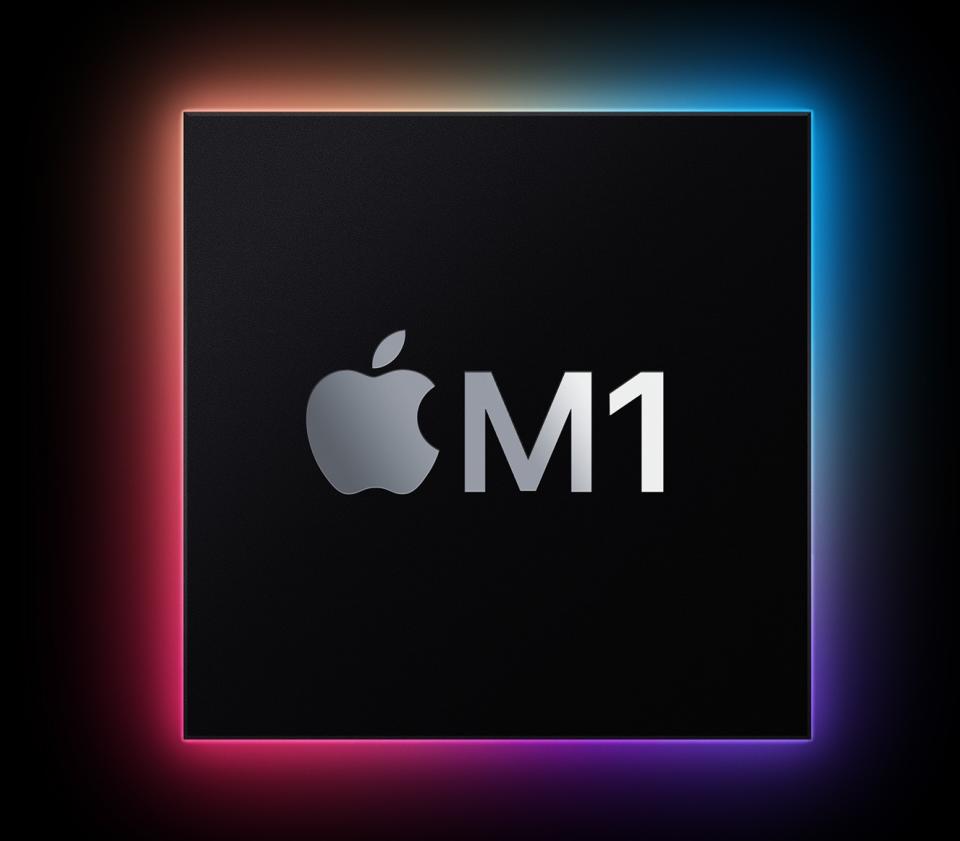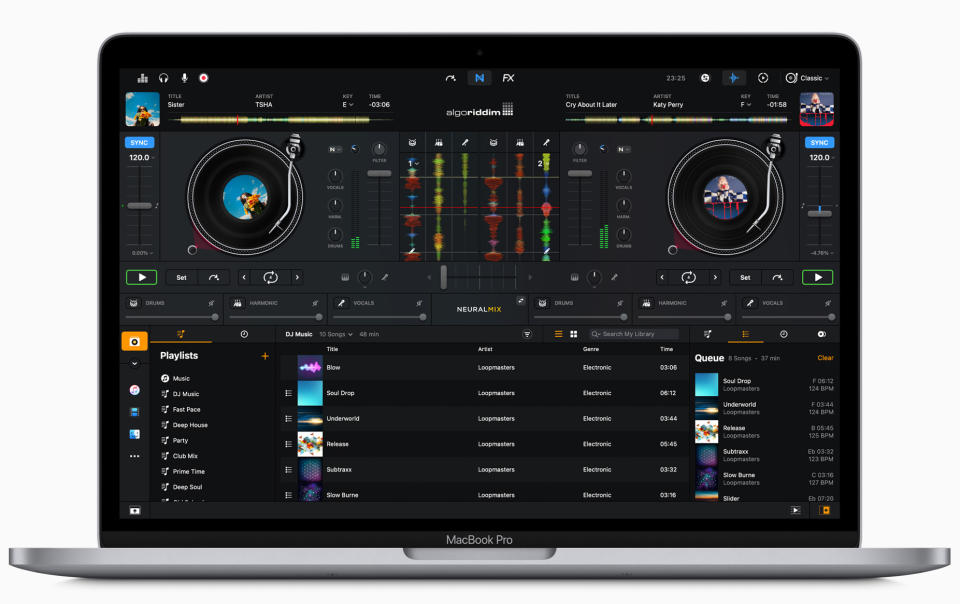Apple MacBook Pro 13-inch review: How the new M1 chip stacks up to Intel’s
Apple (AAPL) is in the midst of one of the biggest changes to its Mac line of products in more than a decade. After 15 years, the company is ditching its long-standing relationship with Intel (INTC) and is instead building its own processor specifically designed for its laptops and desktops called the M1 chip.
And one of the first products to get the M1 is also one of Apple’s most important: the MacBook Pro 13-inch. A workhorse for photo and video editors who need a powerful machine on the go, the Pro is an essential proving ground for the M1 chip’s capabilities.
And with a potent graphics processing unit (GPU), and central processing unit (CPU), along with 8GB of RAM, the M1-powered Pro I’ve been working with has proven to be an exceptionally impressive example of what Apple’s new chip brings to its machines. And one of the rare first-generation products I’m confident in recommending.
The M1 chip
Let’s get one thing out of the way when it comes to the new 13-inch MacBook Pro. There’s no difference in outward appearance between it and the prior generation Intel-based Pro. That means there’s no way for you to tell which version of the Pro you’re running without looking at the system’s specs.
Both laptops have the same dimensions, same 13.3-inch Retina Display, and same backlit Magic Keyboard, which is a merciful upgrade from the unreliable butterfly-style keyboards found on older MacBooks.
Under the hood, though, things are far different than before. The Arm-based M1 chip, which Apple introduced during a virtual press event at its Cupertino, California, headquarters earlier this month, is a wild departure from the Intel processors the company has relied on since 2005. Its architecture is similar to the chips Apple uses in its iPhone and iPad, putting power consumption and performance at the forefront.

Unlike Intel’s chips, the M1 is built using a 5-nanometer process, meaning its transistors measure just 5 nanometers in size. Intel, meanwhile, is stuck on a 10-nanometer process, and recently announced its 7-nm chips would be delayed. AMD (AMD), for its part, is working with 7-nm chips, meaning that Apple is already ahead of the curve.
During its announcement, Apple said that its M1 chip offers improvements over leading PC processors in terms of both CPU and GPU performance, claiming that it has “the fastest integrated GPU in the world,” and features “the world’s fastest CPU cores in low-power silicon.”
I’ve been using the M1-powered Pro as I would my normal work computer, and haven’t noticed any bit of slowdown, outside of the occasional, and predictable, hiccup in Google’s (GOOG, GOOGL) Chrome browser.
A nice aside about having the M1 chip in the Pro is that it also means Apple uses its own image signal processor for its FaceTime camera, which dramatically improves the image quality of your video chats.
As for battery life, Apple promises the Pro will get a whopping 20 hours of power out of a single charge while playing back video, compared to 10 hours for the Intel version of the machine. And while I can’t say that it specifically manages that, I can tell you that the battery in my review unit seemed like it just wouldn’t quit. Even after a full day of use, I still had plenty of juice to keep using the Pro well into the night.
That’s fantastic for professionals on the go. What’s not so fantastic is that the M1-powered Pro includes just two Thunderbolt/ USB C ports, while the Intel version gets 4. If you’re the type of person who needs as many ports as possible, that’s a big bummer. And yes, there are expansion dongles to add more ports, but with a $1,299 laptop, you shouldn’t need one.
What about graphics performance?
The M1-powered MacBook Pro 13-inch features an integrated GPU similar to what you’d find in an Intel-powered Pro.
I fired up “Shadow of the Tomb Raider” on both the M1-powered Pro with 8GB of RAM and a 2020 13-inch MacBook Pro with an Intel Core i5 processor, Intel Iris Plus Graphics, and 16GB of RAM. The M1-powered Pro blew the Intel-powered machine away.

When I turned on the game’s built-in benchmarking tool, the Intel machine automatically defaulted to the lowest settings, managing just 29 frames per second. Normally, you’d look for about 60 frames per second for a game to be comfortably playable. When I kicked the graphics up to their highest settings, the frame rate dropped to 22 frames per second.
Regardless of the settings I used, though, the Intel-powered system had trouble rendering textures and left strange artifacts around characters.
The M1-powered MacBook Pro handled the game far better, notching 57 frames per second with the graphics set to their lowest and 30 frames per second at their highest settings. Granted, you’re not going to want to play the game at 30 frames per second, but it still looked far better than what the Intel system had to offer.
Running Intel apps on the M1
Did I mention that “Shadow of the Tomb Raider” isn’t even built for Apple’s M1 chip architecture?
That’s right, apps built for Intel’s architecture, which is, well, most of the computer programs out there today, run without issue on the M1 chip. That’s huge for Apple, considering that Windows PC manufacturers that have previously used Arm-based chips ran into compatibility issues with apps developed for Intel’s processor architecture.
Apple does this with a program called Rosetta 2, which translates Intel apps for the M1 chip. And since this all happens in the background, you’ll, ideally, never know if an app was built for Intel’s chip or Apple’s.
In fact, nearly every app I’ve been using since I started reviewing the new MacBook Pro 13-inch was built for Intel’s chip architecture including Chrome, Spotify (SPOT), Slack (WORK), “Shadow of the Tomb Raider,” and Pixelmator. And I haven’t noticed any issues with any of them. The fact that this all works without the end user noticing can’t be oversold.
iOS and iPadOS apps come to the Mac
Naturally, because the M1 chip is using similar architecture to the processors found in Apple’s iPhone and iPad, apps for those devices will now work on the Mac, as well. This is the completion of a goal that Apple has been working toward for some time. Even the interface for Apple’s latest version of macOS, macOS Big Sur, feels more like the iOS and iPadOS, right down to the icons and new Control Center.
With the ability to run the millions of apps in the App Store, Macs instantly become more valuable to their users. You can, for instance, work across devices with a similar experience, or simply access the apps that you already love on your iPhone or iPad on your laptop or desktop.
But not all apps work as well on the Mac as they do on the iPhone or iPad. The game “Crossy Road,” for instance, is a far better user experience with a touch screen than when using the MacBook Pro’s touchpad. “Among Us” works well enough, but it still feels like it could use a touch screen display.
Of course, plenty of apps function well on the Mac, and don’t require touch screen-specific controls. But with iOS and iPadOS apps now available for Apple’s laptops and desktops, it seems as though the company should at least offer the option for a touch screen.
Competitors like Dell have already proven that touch screens can be built into incredibly thin and light laptops, so why Apple hasn’t done the same is a bit confounding.
Should you get it?
I’m normally wary of advising people of purchasing first-generation products, because they almost invariably have kinks that need to be worked out. But from what I can tell of the MacBook Pro 13-inch, there aren’t any. I’m sure over time as more people use the laptop, issues will creep up. But standing here at the outset, this looks as though it’s as solid a machine as its Intel-powered siblings — but better thanks to its, impressive battery life.
I do, however, wish Apple included more than two Thunderbolt ports, especially when the Intel-powered Pro gets 4.
At $1,299, the Pro isn’t for most users. That’s the domain of the volume-selling MacBook Air, which also gets the M1 chip. But for professionals and consumers looking for a high-powered machine, the MacBook Pro 13-inch with the new M1 chip delivers in just about every way.
Sign up for Yahoo Finance Tech newsletter
Got a tip? Email Daniel Howley at [email protected] over via encrypted mail at [email protected], and follow him on Twitter at @DanielHowley.
More from Dan:
PlayStation 5 versus Xbox Series X: Which new console should you buy
Palantir earnings beat expectations, here’s what the secretive data company does
Follow Yahoo Finance on Twitter, Facebook, Instagram, Flipboard, SmartNews, LinkedIn, YouTube, and reddit.

